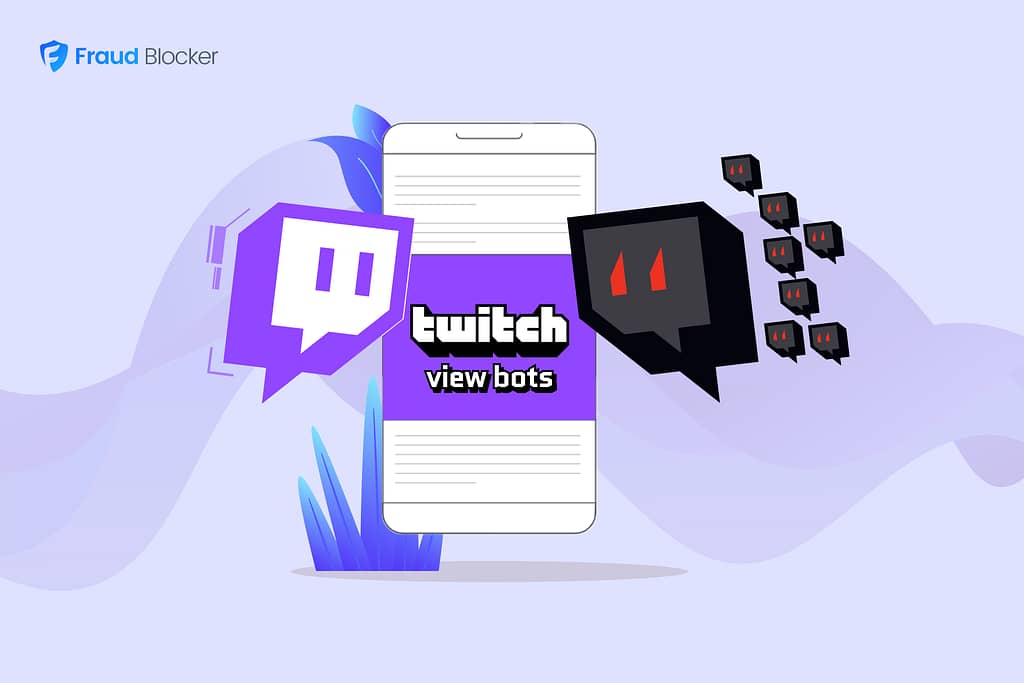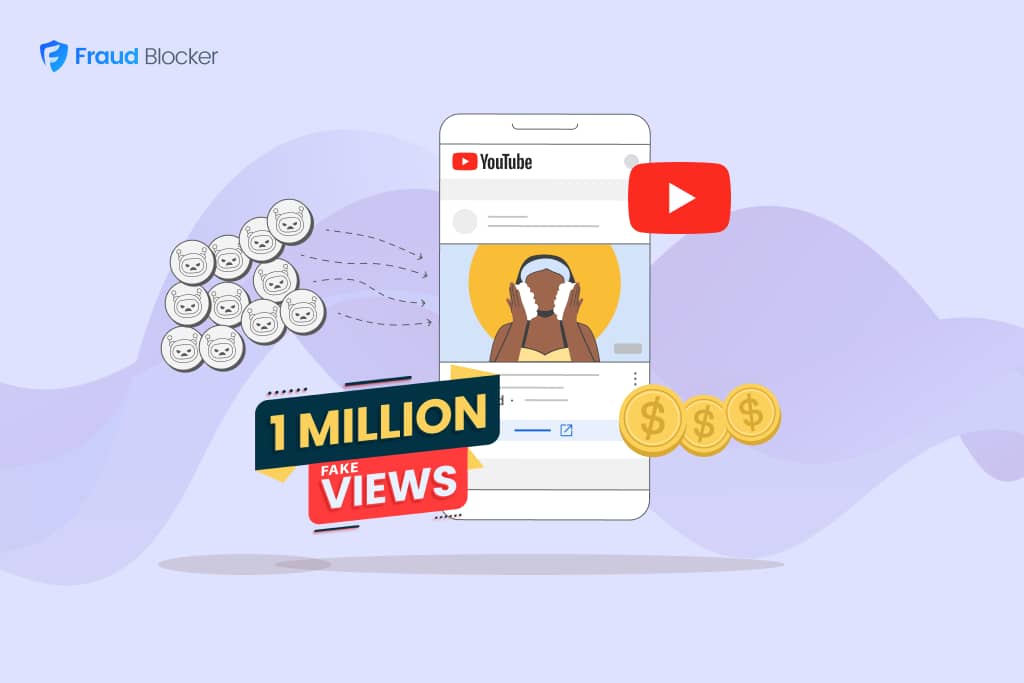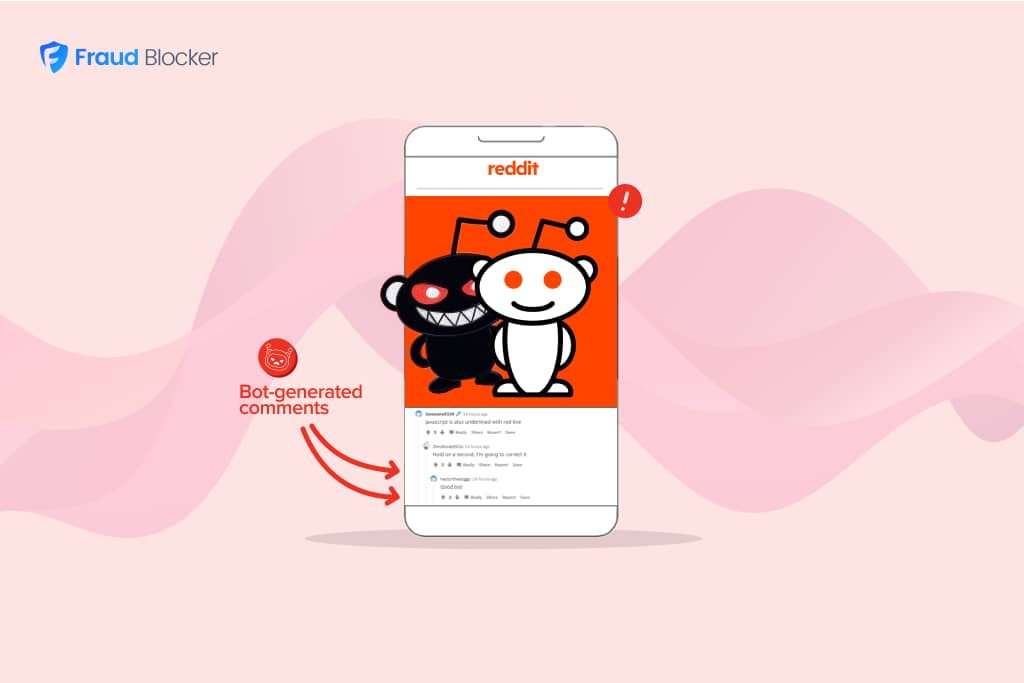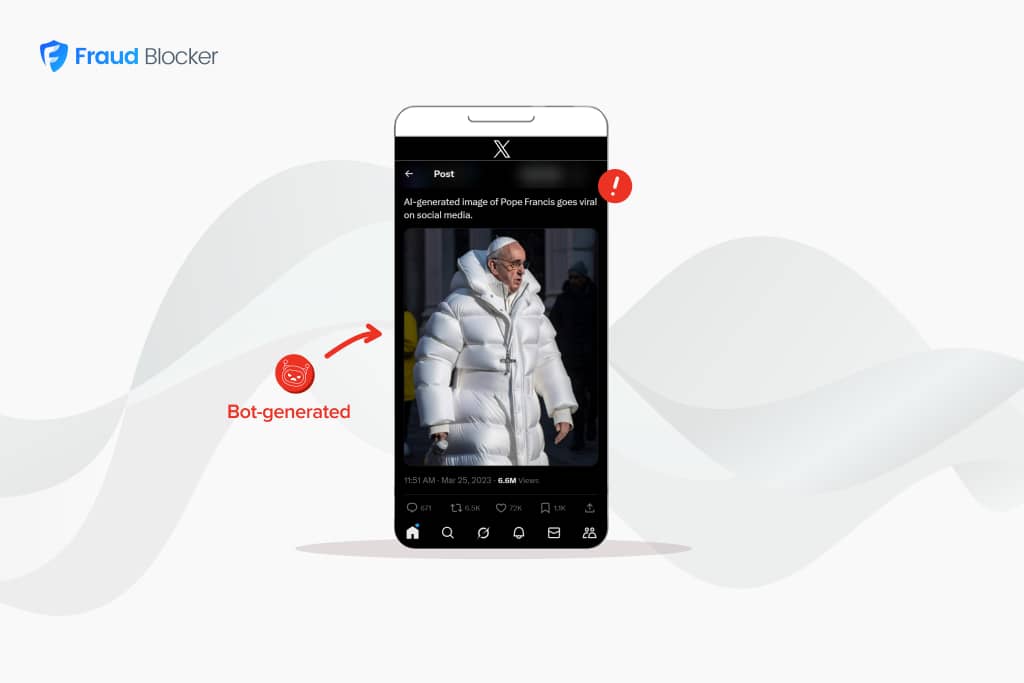
NEW New feature: Verify & block fake emails

We improve your ad performance by blocking click fraud and fake emails

Click fraud is costing advertisers billions in loses. Learn more here.

Click fraud is costing advertisers billions in loses. Learn more here.

Fraud Blocker does not condone the use of viewbots. This is for informational purposes only.
Creating fake views for YouTube videos is unfortunately very easy and common.
These fake views are created by viewbots and streaming farms to generate fake views, inflate engagement metrics, and manipulate the platform’s algorithm to boost visibility on search results or in trending video sections. These bots “watch” videos, leave comments, and even subscribe to channels, creating the illusion of popularity.
This article discusses how they work, how to spot bots, and how to prevent bots for your own videos:
Short answer: Yes, but there can be repercussions (read on).
These services use bots to drive views and engagement in minutes after purchasing. They will artificially increase your view count, tricking both the platform’s algorithm and real viewers into believing a video is more popular than it actually is. Here’s how:
YouTube view bots come in three common forms, each designed to inflate specific metrics:
Acquiring artificial YouTube views is surprisingly easy.
A quick Google search reveals dozens of places to buy views or ways to boost views with a Chrome extension or open-source code
Here’s an example of a site called “views.biz” that offers packages for 1,000 hours of watch time and 250 subscribers for as little as $76:
YouTube viewbots leave clear signs of manipulation. Here are a few ways to detect it:
A sudden, sharp increase in views with no explanation is a strong indicator of bot activity.
For instance, if a video jumps from almost no views to thousands overnight, it could be a sign of viewbots. A YouTuber actually tested this and created a video about the experience below:
High views with low engagement are a red flag.
If a video has tens of thousands of views but only a handful of comments or likes, bots are likely involved because real viewers typically like, share, or comment on a video they enjoy.
For reference, here’s what a healthy engagement rate looks like:
View bots are often used to inflate views, but something may be off if a channel’s subscriber count doesn’t reflect its view count.
For example, a video might have hundreds of thousands of views, but the channel only has a few hundred subscribers, a potential sign of artificial inflation.
Since 7 out of 10 YouTube views come from organic algorithm recommendations, you should expect to see a similar number in a video’s analytics. If a large portion of views come from unusual countries or an external source, this could indicate viewbotting. See an example of this below:
Some bot services include fake comments to make the engagement appear more authentic. However, these comments are often generic or irrelevant and do not mention anything specific about the content.
Here’s an screenshot of fake comments and engagement on a YouTube video, shared on reddit:
There are several great tools and platforms designed to detect fake views and bot activity on YouTube by analyzing view patterns, engagement rates, and traffic sources.
Here are a few tools you can use to quickly check for fake views:
Read more: How to easily spot Twitch view bots on stream.
Definitely. Buying fake views for your YouTube channel may offer a temporary boost, but it comes with significant long-term risks. 💀
YouTube actively monitors for channels that use bots, and those caught can face severe penalties, including termination of their channel or account. Additionally, fake traffic doesn’t contribute to genuine engagement or conversions, making it hard to monetize a channel.
Once flagged, a channel’s algorithmic visibility is drastically reduced, limiting its growth potential. Due to these lasting consequences, viewbots are often discouraged even within the “black-hat” community.
There are also other important YouTube terms to consider that go beyond fake views from bots. Channels that do any of the following can also be penalized:
Yes.
As we’ve discussed above, purchasing fake views can ultimately result in harming your reputation and potentially penalizing your account.
Thus buying fake views to your competitor’s videos — can potentially harm their account in the long term. Once YouTube flags your channel, algorithm recommendations can disappear, and along with it: views, engagement, and ad revenue.
Fake YouTube bots can also leave unfavorable comments, downvote videos and create strong viewing signals that harm your competitors.
Unfortunately, viewbots don’t just impact your content metrics—they can also waste your advertising budget.
First, ads viewed by bots are not real and never had a chance to convert, which results in wasted spend.
Also, fake views inflate metrics and make your campaign performance appear better than it is. This skews your data and makes it harder to truly optimize for performance.
Finally, YouTube view bots can also decrease ad quality scores. YouTube uses a quality score system to rank ads—better performance gets higher scores, leading to greater visibility with favorable costs. View bots can turn this upside down and cause low scores and higher costs for poorer visibility.
Read more: How Much Ad Fraud is There?
Fraudulent traffic and clicks undermine the success of your YouTube ad campaigns by inflating your view counts and wasting ad spend, providing no real engagement or conversions.
We built Fraud Blocker to help identify and block bots, click farms, and other suspicious traffic that can drain your ad budget. By filtering out these fraudulent interactions, you ensure that your ads are only seen by real, potential customers.
Sign up for a 7-day free trial and see how much money we can save you.


